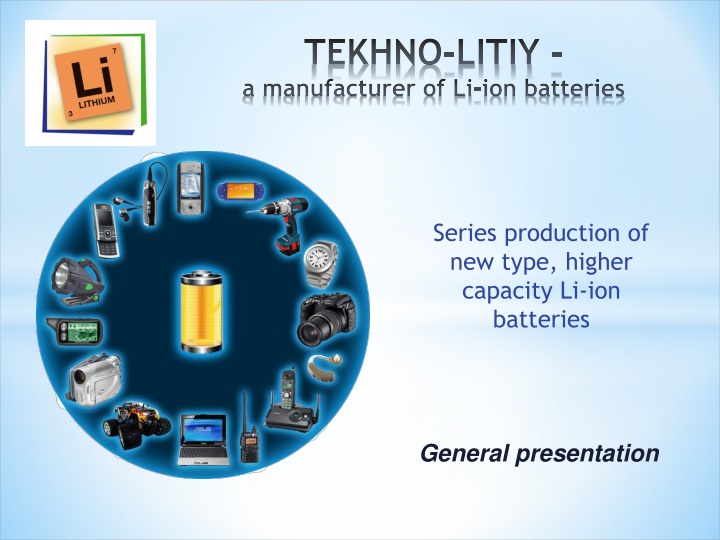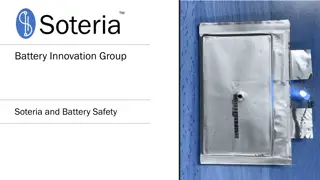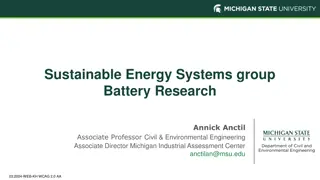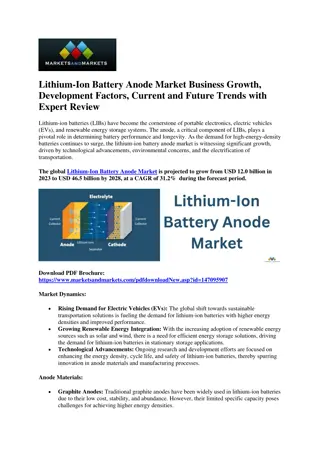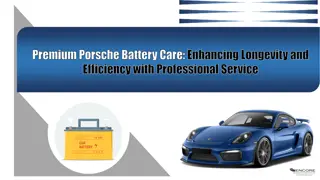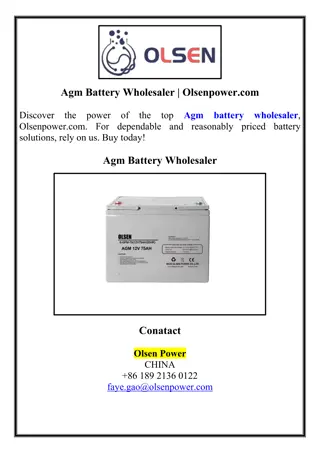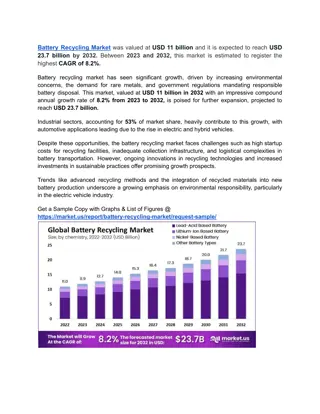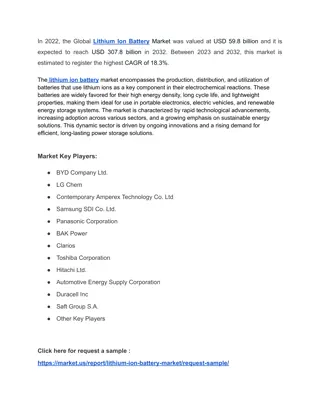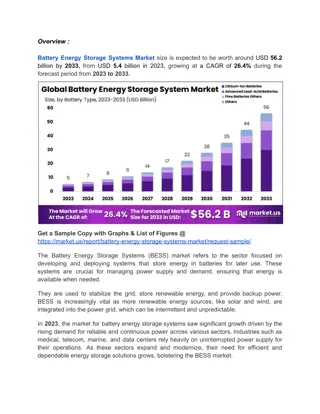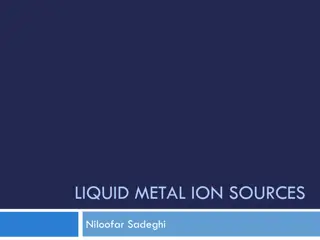Advancements in Li-ion Battery Technology by Tekhno-Litiy
Tekhno-Litiy, a prominent manufacturer of Li-ion batteries, introduces higher capacity batteries with exceptional advantages such as high energy density, no memory effect, low self-discharging, and fast charging. They excel in the production of second-generation Li-ion batteries based on nano-structural silicon anode materials, offering superior energy density and resource efficiency. The company's manufacturing capabilities and specific characteristics of different electrochemical systems mark a significant leap in battery technology.
Download Presentation

Please find below an Image/Link to download the presentation.
The content on the website is provided AS IS for your information and personal use only. It may not be sold, licensed, or shared on other websites without obtaining consent from the author.If you encounter any issues during the download, it is possible that the publisher has removed the file from their server.
You are allowed to download the files provided on this website for personal or commercial use, subject to the condition that they are used lawfully. All files are the property of their respective owners.
The content on the website is provided AS IS for your information and personal use only. It may not be sold, licensed, or shared on other websites without obtaining consent from the author.
E N D
Presentation Transcript
TEKHNO-LITIY - a manufacturer of Li-ion batteries Series production of new type, higher capacity Li-ion batteries General presentation
Product description of the company Advantages of the company products compared to similar products: * high energy density at least 250 W-hour/kg (batteries); * no mem ry effect: batteries can be recharged irrespective of their charge level; * low self-discharging; * fast battery charging up to 90% of capacity within 30-40 minutes; * high resource; * low ratio between cost and specific characteristics.
Specific characteristics of various electrochemical systems, generations I to III 1stgeneration: anode carbon, cathode - either lithium ferrophosphate, or cobaltite. 2ndgeneration: anode silicon, cathode ferrophosphate or cobaltite. 3rdgeneration: silicon anode and vanadium cathode , or carbon anode and vanadium cathode.
Main advantages of the 2ndgenerations batteries compared to similar products Manufacturing and series production of higher capacity, new generation Li-ion batteries (LIB) based on nano-structural silicon anode materials. Universal characteristics* Current design level of LIB in Tekhno-Litiy, LLC Current global mass production level High energy density Number of cycles High specific energy resource** Temperature range Warranty service life > 250 320 Watt*hour/kg > 300 cycles; 96 kW*hour*cycle/kg -50 +50 17 years 150 180 Watt*hour/kg > 500 cycles; 90 kW*hour*cycle/kg -10 +40 6 years Universal characteristics are those that do not depend on the weight and dimensions: * *Volume of energy (W*A*hour/kg) per one kg or liter of the battery. * **Specific energy resource is the volume of energy saved in the battery over the whole period of its practical use (W*A*hour*cycle/kg) * Energy density is the universal characteristic that describes the current level of technical excellence, while specific energy resource characterizes the excellence of design. Additional advantage: The production equipment used for manufacturing of the 1stgeneration LIB is 80 90% acceptable for the production of the 2ndand 3rdgenerations LIB. Design and technical parameters of the 2ndand 3rd batteries are able to achieve specific characteristics within the range from 60 to 70% of the theoretical characteristics (see page 3). In view of the above, the 2ndgeneration specific characteristics will be 320- 330 W*hour/kg, and those of the 3rdgeneration - 350-650 W*hour/kg
Typical factory producing small-size Li-ion batteries with the overall capacity up to 10.4 MW-h/year Main characteristics: Dimensions of the production premises 50 20 7 m; headcount - 4 shifts x 15 people, and 12 people administration and back office staff (totally 72 people); cycle 12 days of continuous production and 2 days preventive maintenance and recharging; power consumption ~ 600 kW; heat energy released during production ~ 400 kW; this energy is used efficiently in the supporting production processes. The production is oriented to domestic materials and outsourced components (Novosibirsk, Saratov, Moscow, Saint-Petersburg, Chernogolovka). Necessary contract relations are in place.
